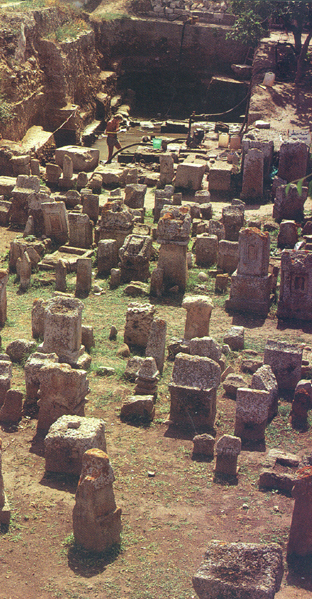Image Details

Gary Pratico
The huge precinct at Phoenician Carthage measured about 65,000 square feet and contained nine levels of burials (compare with previous photo). From the eighth to the second century B.C.E., Carthaginians interred in the Tophet the remains of children sacrificed to the god Ba‘al Hammon and to the goddess Tanit.
Evidence from ancient Phoenician and Aramaic sources indicates that Ba‘al Hammon is to be identified with the Canaanite god El. Paradoxically, El—whose epithets include “Kindly One” and “creator”—was seen as both a progenitor and also the one demanding child sacrifice. Biblical scholars have noted that the deity of the Hebrew Bible shares many characteristics with El. Yahweh, like El, was believed to have a claim on a child because the child was seen as a divine gift. Unlike El, however, Yahweh does not typically exercise this claim. Instead the child can be redeemed by the offering of an animal sacrifice in his stead—as with Isaac—or, as in the case of Samuel and Samson, by dedication to divine service.
